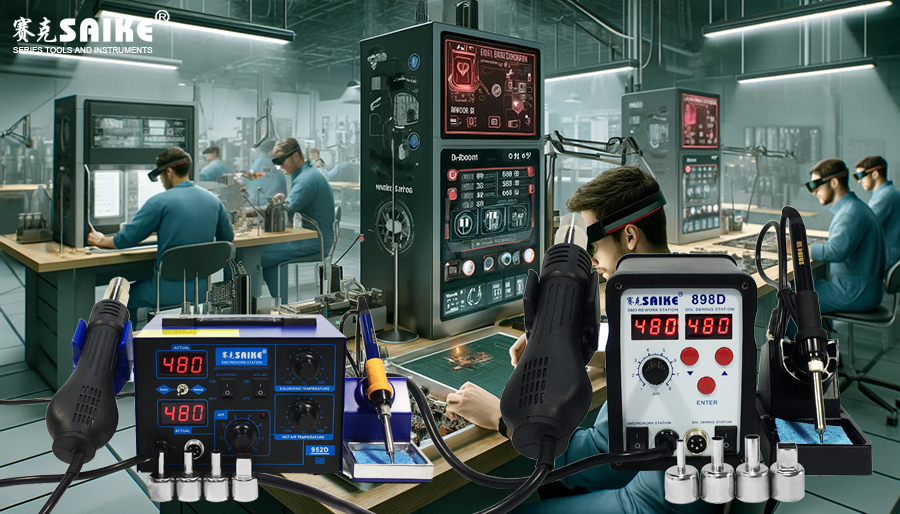
SK-YJ000RFCHT-KP 100031
The hot air desoldering station is a widely used equipment in the electronic manufacturing and repair industry, especially showing its unique effectiveness when dealing with delicate electronic components. The basic identification and detection of electronic components is a prerequisite for maintenance work using a hot air desoldering station. This article will explore how to use the hot air desoldering station in conjunction with basic identification and detection techniques to ensure the proper handling and functional testing of electronic components.
I. Basic Identification of Electronic Components
Before starting to use the hot air desoldering station, it is crucial to correctly identify various components on the circuit board:
1.Passive Component Identification
– Resistors: Their resistance value is usually represented by color-coded rings or surface-printed markings. Resistors are typically rectangular or cylindrical in shape.
– Capacitors: Their markings include capacitance (such as μF) and voltage tolerance. Capacitors can be surface-mount or through-hole mounted, coming in various shapes.
– Inductors: They are usually larger in size and have a distinct coil structure.
2.Active Component Identification
– Transistors: Their markings typically include model numbers and polarity indications, showing their function and installation direction.
– Integrated Circuits (ICs): ICs usually have multiple pins and detailed model information printed on their surface. They can be microprocessors, memories, or composite circuits with other functions.
II. Application of Hot Air Desoldering Station in Component Detection
Before using the hot air desoldering station for component detection, it is essential to understand basic detection techniques:
1.Visual Inspection
– Before conducting any electrical tests, perform a visual inspection to look for any physical damage, such as cracks, burns, or corrosion.
2.Multimeter Detection
– Connectivity Test: Check the connectivity between circuits or components.
– Resistance Measurement: Verify if the resistor’s resistance value meets the specifications.
– Capacitance Measurement: Inspect whether the capacitor is damaged or deviates from its nominal value.
3.Preparation for Detection Using Hot Air Desoldering Station
– When replacing or re-soldering suspected faulty components, the hot air desoldering station provides precise heating for safe removal and replacement.
III. Advanced Techniques of Hot Air Desoldering Station in Component Desoldering
1.Precise Control of Temperature and Air Speed
– Adjust the temperature and air speed of the hot air desoldering station according to the size and sensitivity of the components, ensuring no thermal damage to the components or surrounding circuits.
2.Nozzle Selection
– Use a nozzle suitable for the specific size and shape of the component, ensuring that the hot air evenly and accurately covers the area to be processed.
3.Anti-static Measures
– Take appropriate anti-static measures when operating the hot air desoldering station, such as using anti-static wristbands and mats, to protect sensitive electronic components from electrostatic damage.
IV. Summary
Correct identification and detection of electronic components, combined with effective use of the hot air desoldering station, are key to improving success rates and efficiency in electronic maintenance work. By utilizing the techniques and strategies mentioned above, maintenance technicians can more proficiently handle various electronic components, ensuring the quality and reliability of maintenance work. Continuously improving proficiency in hot air desoldering station operation and mastering the ability to identify electronic components will directly impact the success rate of maintenance tasks.


